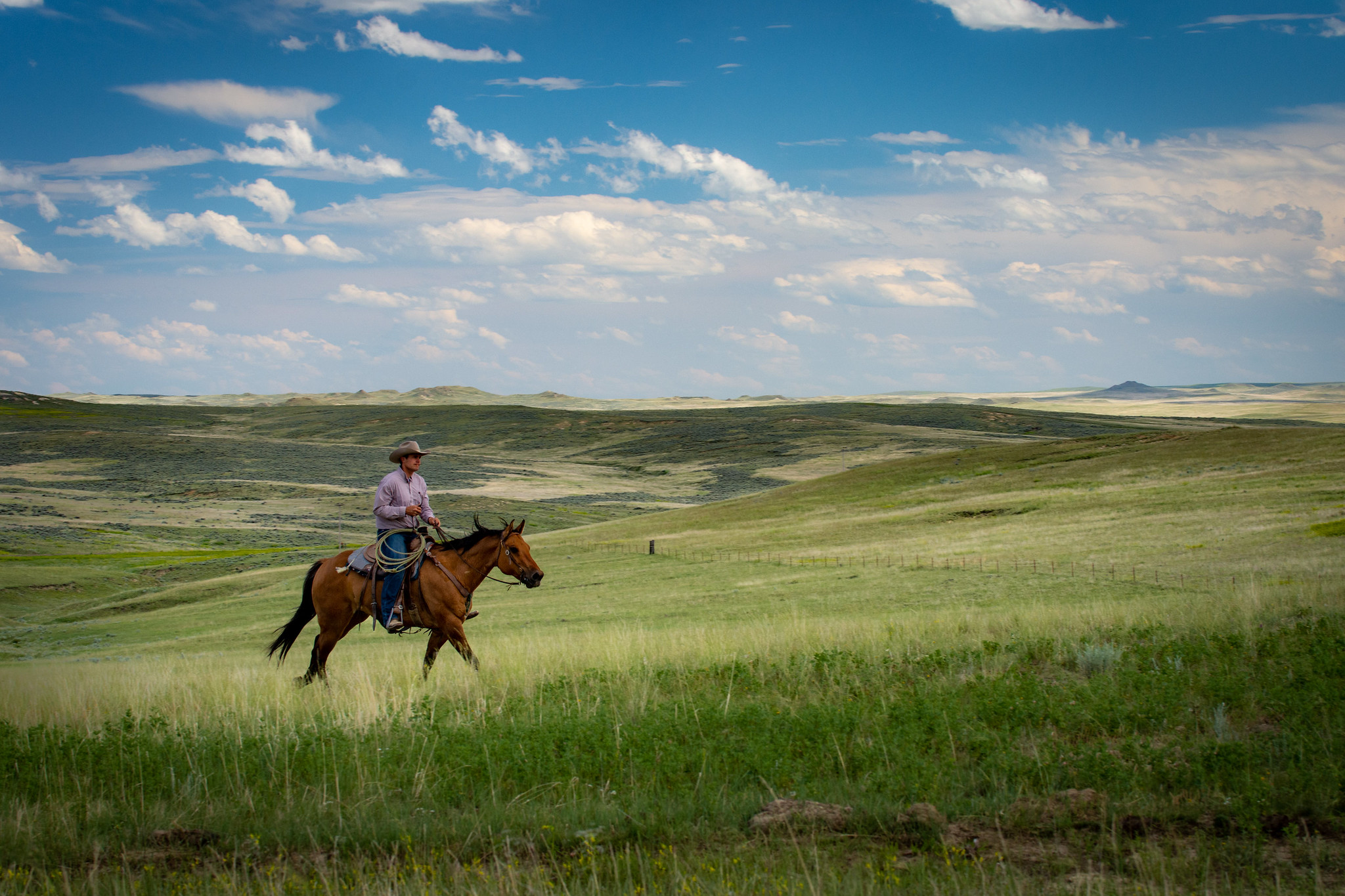Grazing Lands
 The impacts of climate change on grazing lands and the livestock operations that depend on them will vary by region, type of grazing land, vegetation community, and the type of livestock. These impacts are superimposed upon other factors such as land ownership, historical and current management, demographic changes and access to USDA programs.
The impacts of climate change on grazing lands and the livestock operations that depend on them will vary by region, type of grazing land, vegetation community, and the type of livestock. These impacts are superimposed upon other factors such as land ownership, historical and current management, demographic changes and access to USDA programs.
Rangelands cover an area of 405.8 million acres or 21% of the U.S. surface area. In the Western states, rangelands are predominantly Federally-owned lands, whereas over the Great Plains, rangelands are privately-owned. Pasturelands are also privately owned and cover 121.1 million acres (6% of the U.S. surface area); pasturelands are more common in the wetter half of the US, to the east of the 97th meridian. Rangelands and pasturelands are both used for grazing but the difference between the two is that rangelands support natural (and usually native) ecosystems while pasturelands are highly managed, cultivated systems.
Continue to the full text Grazing Lands in a Changing Climate or browse related content:
-
Southwestern Drought Seen in Pasture, Rangeland, and Forage Insurance Program
To help farmers cope with drought, programs like the Pasture, Rangeland, and Forage (PRF) insurance program managed by…
-
NRCS California Climate Conversations Resources
This page supplements the USDA California Climate Hub’s “Climate Conversations” workshop series, which aims to enhance…
-
Adaptive Grazing Management for Resilient Northwest Rangelands
Adaptive Grazing Management is a flexible process that can help rangeland producers adjust to challenges associated…
-
Climate Change and Agricultural Resilience in the Northern Triangle
A joint report by the USDA and CATIE examines the impact of climate change on agriculture and migration in Central…
-
Wildfire & Flood Risk Forecast Resources
This toolshed contains links to online wildfire and flood risk forecast applications.
Please check this site…
-
Climate Change and Wildfire in Northwest Rangelands
The risk of large, frequent, and severe rangeland wildfires is increasing as warming temperatures and invasive annual…
-
Climate Conversations with Oklahoma Conservation District Staff
Oklahoma has seen an increased incidence of extreme climate-related events in the first 20 years of the 21st Century as…
-
Checking On The Cows From Your Phone - Technologies for Precision Ranching
Precision ranching involves the use of technologies such as smart-sensors to allow for automated monitoring or task…
-
NIFA Awards $4.5 Million to Northern Plains Climate Hub and Outreach Partners for Native Climate, Climate-Smart Agriculture, and Insurable Weather
Supporting climate adaptation in Native communities, The Prairie Hub Project: Promoting climate-smart agricultural…










